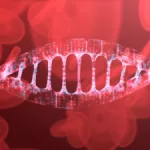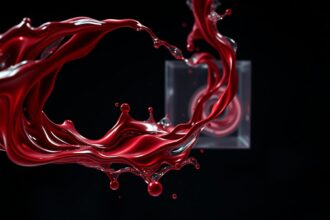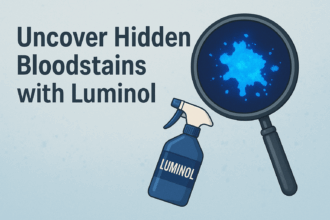Published Date: March 2024
Authors: Matthew A. Saucier, Nicholas A. Kruse, Timothy A. Lewis, Nathan I. Hammer, and Jared H. Delcamp
Published Journal: Royal Society of Chemistry
Introduction: Forensic analysis has significantly evolved since the advent of DNA DNA, or Deoxyribonucleic Acid, is the genetic material found in cells, composed of a double helix structure. It serves as the genetic blueprint for all living organisms. Read Full Definition analysis in the late 1980s, with bloodstain detection remaining a critical aspect for crime scene investigation. Luminol, the most common presumptive bloodstain detection agent, offers high sensitivityIn the context of laboratory equipment or analytical techniques, the term "sensitive" describes the capability of a machine or method to detect even very small amounts or concentrations of a substance. Sensitivity is a quantitative Read Full Definition but suffers from low selectivity and various limitations. The study introduces a novel dye, SO3C7, designed to detect human albumin, offering advantages over traditional detection methods.
DNA, or Deoxyribonucleic Acid, is the genetic material found in cells, composed of a double helix structure. It serves as the genetic blueprint for all living organisms. Read Full Definition analysis in the late 1980s, with bloodstain detection remaining a critical aspect for crime scene investigation. Luminol, the most common presumptive bloodstain detection agent, offers high sensitivityIn the context of laboratory equipment or analytical techniques, the term "sensitive" describes the capability of a machine or method to detect even very small amounts or concentrations of a substance. Sensitivity is a quantitative Read Full Definition but suffers from low selectivity and various limitations. The study introduces a novel dye, SO3C7, designed to detect human albumin, offering advantages over traditional detection methods.
Key Points from the Study
- Novel Dye Design: SO3C7 is a heptamethine indolizine-cyanine dye with sulfonate groups, enabling it to sense albumin. Its longer wavelengthWavelength is a fundamental concept in the study of waves, whether they are associated with sound or light. It refers to the distance between two successive points on a wave, commonly measured from crest to Read Full Definition emission (942 nm) compared to previous materials makes it suitable for detecting bloodstains behind approximately 5 mm black fabric.
- Photophysical Properties: SO3C7 exhibits typical p-p* type absorption and emission peaks in organic solvents, with a shift in absorption and emission in an aqueous medium due to aggregation. In the presence of human serum albumin (HSA), emission increases significantly, falling within the optimal imaging window for forensic imaging.
- Stability and Affinity: The dye shows stability over time, maintaining emission intensity in the dark for up to 96 hours. Its binding affinity to HSA, determined by concentration-dependent emission studies, indicates sensitivity to human blood even at diluted protein concentrations.
- Near Infrared Photography: NIR photographs demonstrate the dye’s ability to emit through layers of black fabric, essential for forensic applications. SO3C7 exhibits superior brightness and contrast compared to previous materials, enabling easier detection against background noise.
Implications and Conclusion
The study presents a promising avenue for enhanced forensic imaging with SO3C7, offering selectivity and sensitivity to human blood. Its ability to penetrate dark fabrics and maintain stability over time makes it a valuable tool for crime scene investigators. Moreover, the relatively low implementation cost enhances its practicality for widespread adoption in forensic labs.
Conclusion
The research underscores the importance of continuous innovation in forensic science
Paper Reference: Saucier, M. A., Kruse, N. A., Lewis, T. A., Hammer, N. I., & Delcamp, J. H. (2024). Switch-on near infrared emission in albumin behind dark fabric: toward application in forensic latent bloodstain detection. RSC Advances, 14(14), 9254–9261. DOI: 10.1039/d4ra00756e











